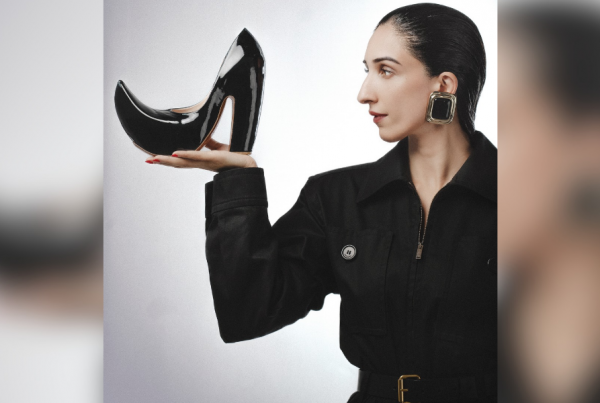People who have sat by the enigmatic Bosphorus on a windy summer night say they have heard ‘no music like the wash of waves against a ship.’ They have been hypnotized by the mercurial layers of blue, changing through the day and dotted by ships on the horizon that appeared to be sailing through paradise. Such is the trance that has held Shamaeel hostage to this fascinating land, ever since her relationship with Turkey began almost three decades ago.

“I did my first shows in Turkey in 1998, in Istanbul, Izmir and Ankara and since then I’ve never left,†she recalled, when we sat down to talk about the recent trip she took, which allowed a small troupe of people to actually experience the mood board that has inspired her work.

Team Shamaeel at Iznik Classics
“There are layers and layers of visual beauty in Turkey,†she continued. “There is poetry and romance. There’s a whole culture of the history and then the jamhooriyat and how it changed Turkey and led to a whole new culture that we see today. There’s Sufism that rears its head in the most unexpected of places. And then there’s the Bosphorous, which is most enigmatic. There is pottery, painting… so much liberation of art; where will you find that anywhere else in the world?â€
The most fascinating feature of Turkey, she explains, are the infinite layers of historical inspiration, which even after thirty years of extensive travels remain unexplored to her.
“I feel there are layers that I haven’t even dug up yet. That is why it’s so inspiring. Maybe I’ve done Iznik many times but I’ve done it in so many different ways and countless ideas come to me each time I visit.â€
Also read:Â Shamaeel at FPW is a game-changer for couture shows

Shamaeel has been collaborating with Gallery Mehmet Cetinkaya
There are indeed countless ways in which Shamaeel has interpreted the glory of Turkey over the years. For most designers a location that inspires a collection is merely that: a location, with impersonal features that find themselves as motifs in a digital print. Shamaeel has literally been in a relationship with this exotic land, and it’s a relationship that she has romanticized through her designs.
The Sultans of the Ottoman Empire documented their life in miniature styles of painting; those miniatures were brought to life in Shamaeel’s layered caftans embellished with intricate detailing. Topkapi Palace, with its layers of verandahs and courtyards and harems, can be seen reimagined in the layers of Shamaeel’s clothing. She plays with similar tiers and textures. Iznik art has inspired many designers but Shamaeel’s interpretations have allowed Iznik art to coexist with an aesthetic indigenous to Pakistan. She has made it relevant here, as we witnessed in her latest collection, The Blue Tulip.

Blue, of course, is considered a colour of healing. And Turkish art is full of rich colours and robust, symbolic imagery like the anaar and the tree of life, which depicts fertility and life. There was a flow of cultures into Turkey, which is why it is so dynamic. It developed craft and liberated it, allowing it to evolve. And from carpets to tiles to colours to art and embroideries, one sees a cornucopia of Shamaeel’s love for Turkey in her collections.
“Turkey is a melting pot of Caucasians, Albanians, Armenians of Tajikistan, of Ottoman history and modern day Istanbul…how does one not get inspired?†she agreed.
What is the one place that she found most inspirational?

“That would be the Topkapi Palace and the treasury within, where they house the Sultan’s caftans. These caftans were never owned by the Sultans but by the treasury and they were passed on from generation to generation. The beauty of antiquity remains in those caftans and yet you see elements of modern Istanbul, which keep changing.â€
“The past, present and future comes together for me. It’s not static, it’s constantly changing, which is why it’s so exciting. This relationship with Turkey will continue and I’ll continue bringing out something new every year,†she concluded. “When people say, ‘Why Turkey again and again’ I say, ‘Why not’?â€
- Photography by Rizwan ul Haq





